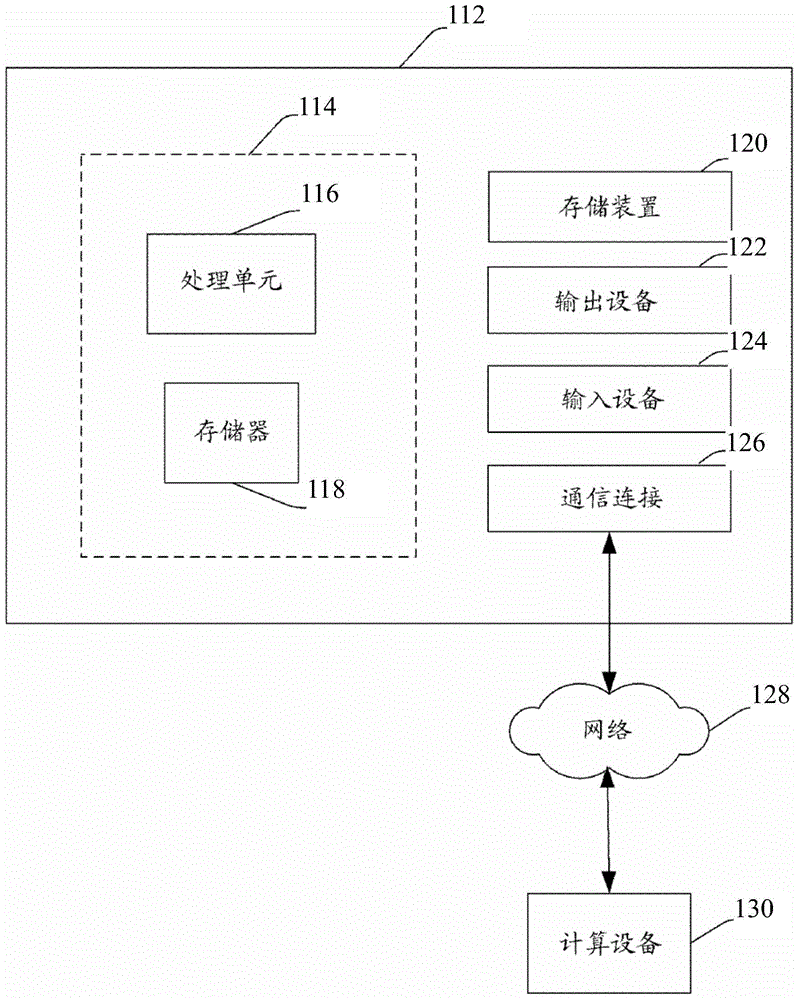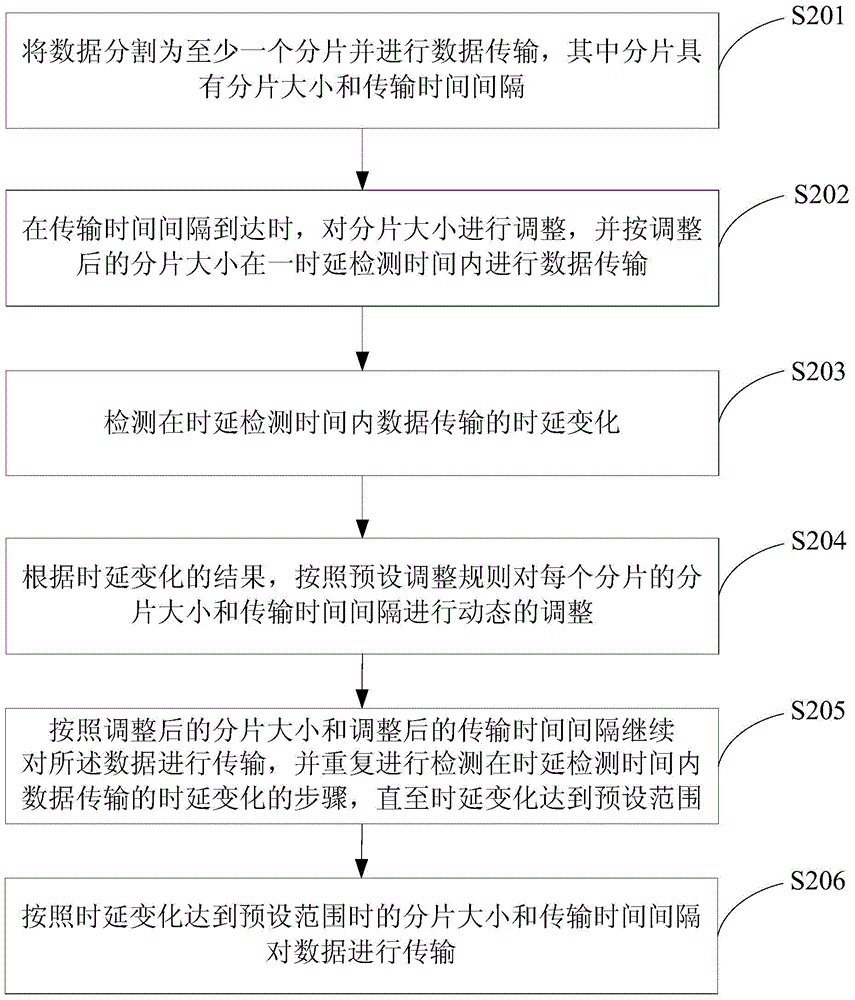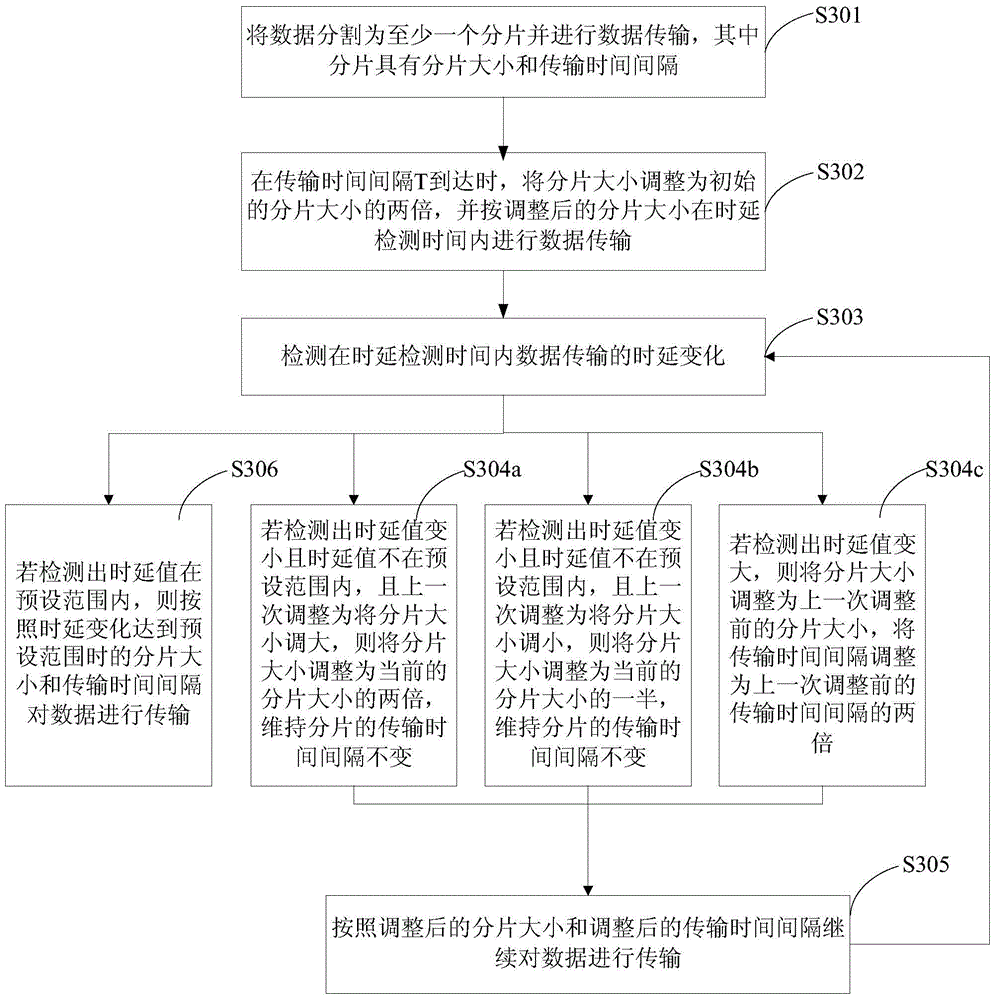Data transmission method and apparatus thereof
A data transmission method and a technology of a data transmission device, which are applied in the field of communication, can solve problems such as the inability to guarantee data transmission delay, the inability to automatically adjust the number of fragments, etc., and achieve the effect of reducing transmission delay and low transmission delay
- Summary
- Abstract
- Description
- Claims
- Application Information
AI Technical Summary
Problems solved by technology
Method used
Image
Examples
Embodiment Construction
[0030] In order to make the object, technical solution and beneficial effects of the present invention more clear, the present invention will be further described in detail below in conjunction with the accompanying drawings and embodiments. It should be understood that the specific embodiments described here are only used to explain the present invention, not to limit the present invention.
[0031] In the following description, specific embodiments of the present invention are described with reference to steps and symbols for operations performed by one or more computers, unless otherwise stated. Accordingly, it will be understood that the steps and operations, which at times are referred to as being performed by a computer, include manipulation by a computer processing unit of electronic signals representing data in a structured form. This manipulation transforms the data or maintains it at a location in the computer's memory system that can reconfigure or otherwise alter t...
PUM
 Login to View More
Login to View More Abstract
Description
Claims
Application Information
 Login to View More
Login to View More - R&D
- Intellectual Property
- Life Sciences
- Materials
- Tech Scout
- Unparalleled Data Quality
- Higher Quality Content
- 60% Fewer Hallucinations
Browse by: Latest US Patents, China's latest patents, Technical Efficacy Thesaurus, Application Domain, Technology Topic, Popular Technical Reports.
© 2025 PatSnap. All rights reserved.Legal|Privacy policy|Modern Slavery Act Transparency Statement|Sitemap|About US| Contact US: help@patsnap.com



